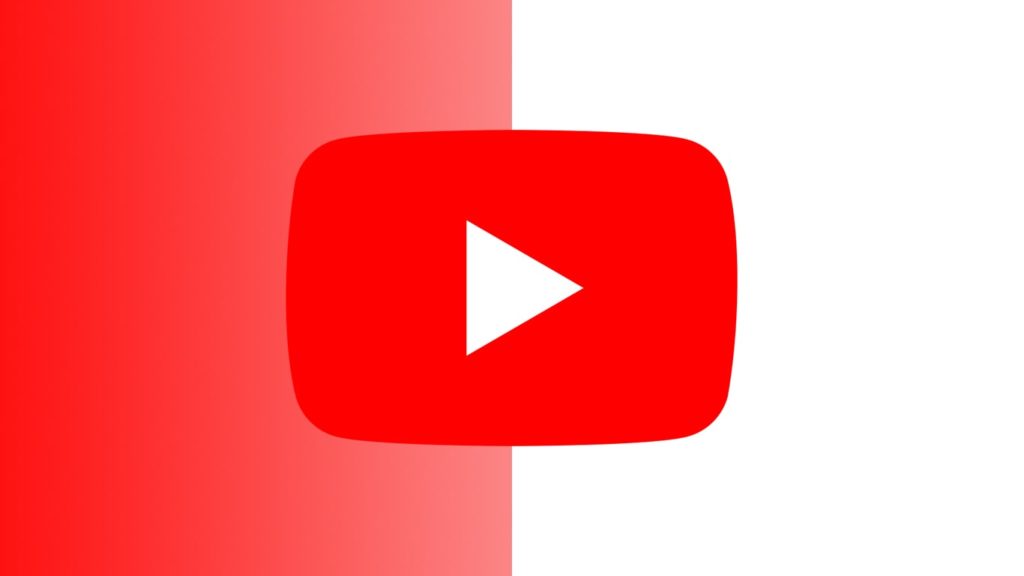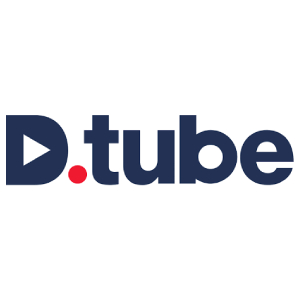
There’s plenty of video content on the internet, and the rise has come to notice in the pandemic and post-pandemic era. With the audience and creators all locked in, there had to be some growth. Plus, the credit goes to cheaper internet. According to Wyzowl’s Video Marketing Statistics 2021 study, people watch an average of 18 hours of online video each week, up 2 hours from last year and over 7 hours since 2019. YouTube is the most popular platform for watching online videos.
It is great for many reasons, but one of the most obvious benefits has to be that it’s an amazing resource when you want to upload videos. It doesn’t matter whether you want to share them online with family or friends or a worldwide audience.
But with the good comes bad (we described it in our article on the advantages and disadvantages of YouTube). Violations, abuse, piracy, and bullying – it’s all happening now more than ever. If you are looking to make a switch, these are the best YouTube alternatives worth trying out.
Why do you need to replace YouTube?
- Being a popular platform, YouTube is centered around ads. Sometimes it can seem like a lot when a video shows non-stop ads, which can lead to user dissatisfaction.
- YouTube is also used to promptly share inappropriate content, despite strict regulations in place.
- Some users also use the platform to spread bigoted and racist content, or for defamation and bullying.
- And despite what anyone says, it is not that easy to make money off of YouTube. Even those creators with tons of user followers do not earn that much from ads, as a substantial part of their earnings is kept by the platform itself.
- Furthermore, the quality of the videos is not always up to par, as every creator can’t shoot a professional grade video.
- YouTube is also used freely to spread misinformation or unproven facts.
- And lastly, the platform collects data blatantly.
1. Vimeo

Vimeo is probably best known as being similar to YouTube because users can upload their videos. However, Vimeo users put a lot more focus on the actual quality of the video. As a result, there are some things you can’t do when uploading with Vimeo. As of 2021, the platform has over 200 million registered users with over 1.5 million subscribers to its services.
If you’re looking to upload what is essentially just another one of your home movies, a video blog, or even a marketing idea, keep an eye out for it. Host yourself as an influencer, or start earning by marketing yourself and selling your ideas. It’s also an OTT (over-the-top) platform, so you never miss out on HD content.
2. DTube

DTube, a decentralized video-streaming service similar to YouTube, is one of the most privacy-oriented video content platforms available. It’s comparable to YouTube but fully decentralized. DTube videos aren’t stored on a single server or network of servers from a single company, like on YouTube. Instead, all its material is kept on the blockchain rather than being centralized. This implies hackers would have difficulty tampering with video material since it’s unlikely your data will leak.
Plus, the community somewhat owns the platform. Furthermore, since it is blockchain-based, it doesn’t have advertisements or a recommendation engine, so it’s completely free. It’s one of the top YouTube alternatives for the free speech community and materials.
3. TikTok

TikTok is as good a YouTube alternative as any and, in some aspects, even better. When it launched in September 2016, no one knew it was going to take the world by storm. It quickly gained popularity and became a global phenomenon. Today, it has over 1.6 billion registered users and a billion monthly active subscribers, making it the world’s 6th largest social media platform.
Users can view and create short form videos that can vary from funny or comedic, to dance, songs, or otherwise entertaining. The app allows users to create a video anywhere between 3 seconds and 10 minutes. It is a platform for easy consumption of content, and users can spend hours simply scrolling down.
4. Vevo

With more than 400 million monthly users worldwide in 2016, Vevo is among the leading alternatives to YouTube music fans will want to check out. Vevo is home to many popular music videos, including Justin Bieber, Taylor Swift, Katy Perry, and other famous singers or bands.
If you’re looking for official music videos rather than low-quality concert/musical performances filmed with a smartphone camera, this platform will deliver exactly what you seek. So, look if the types of YouTube channels you recently watched are all in the music category to make a decision.
Unfortunately, Vevo no longer allows users to directly upload content to its site. Instead, all material seen on Vevo must first be approved by one of several partner record companies. This means you won’t find videos as easy to enjoy as YouTube.
5. Dailymotion

With over 300 million monthly visitors, Dailymotion is one of the most popular video-sharing sites. It provides a lot of value to uploaders and visitors alike. The site also has a variety of ways to make money, such as a pay-per-view option that enables uploaders to sell premium videos.
Dailymotion is worth checking out if you’re someone who regularly watches TV shows or movies online, particularly on sites like Hulu. It has the same feel as YouTube because it allows you to upload clips rather than full-length videos. What sets this apart is that many of its videos are actually hosted by other platforms users rather than Dailymotion itself.
6. Funny or Die

Funny or Die has an impressive one million visitors per day and, as such, isn’t lacking in top-quality videos like some other sites on this list. It’s a good place to visit if you want a video-sharing platform that requires little thought and involves watching short clips instead of lengthy films. Lots of funny bits with celebrities appearing in them can be found here.
Funny or Die is definitely worth checking out if you need something entertaining to watch at work instead of browsing YouTube. It’s also adequate for times when you don’t want to consume content that requires more attention or thought (e.g., watching an entire movie).
7. Vine

Vine was a platform dedicated to Gen Z. It allowed you to create short videos and share them on social media sites like Facebook and Twitter with Vine. In addition, the video-sharing site distributed your content to other users on their social media pages if they so chose.
Moreover, celebrities and influencers used this platform quite regularly to promote upcoming projects. This made it a small-time YouTube rival for short-form video content. While uploading and account creation were disabled in 2019, the site is still up and serves as a time capsule. To clarify, you can still log in and watch content uploaded throughout the years.
8. Muvi

Muvi is something of a perfect alternative to YouTube because it allows one to host both long form videos and a live stream. But it has the potential for more. It even styles itself as an end to end OTT that can run on multiple platforms. Furthermore, it can also be used by companies to launch a streaming service. Basically, you can think of Muvi as a mix of YouTube and WordPress.
The platform allows you to create up to six profiles and can be viewed on both mobile and desktop devices. Anyone can instantly launch a streaming channel on Muvi, becoming a content creator. It also offers 100+ live TV channels and a personalized TV experience.
9. Veoh

The name “Veoh” is derived from the words “vee” and “hay.” Veoh was launched in 2005 as a site where users could broadcast their online television programs. It’s a good site for finding content people created and uploaded themselves, instead of being solely made up of popular media from big production companies.
Each new user has a viral marketing plan that allows views to grow by orders of magnitude. Veoh is also one of the top 500 most visited websites in the United States, with over 60 million monthly visits. This platform is ideal for businesses looking to expand their brand and get leads.
10. Twitch

Twitch is a platform that focuses on gamers, allowing users to watch other players’ gameplay videos or broadcast their live gaming sessions. There are also sections for e-sports and pro-gaming content. If you need something more casual than Twitch’s regular fare, though, skim the rest of the site; there are lots of funny videos elsewhere, too. It’s a place for gamers to interact with one another, exchange ideas, and even pick up new talents.
Twitch is a live video streaming service owned by Twitch Interactive, a division of Amazon.com, which focuses on video gaming. The service had around 7.7 million streamers as of January 2023. If you are a gamer, it might be better to go with Twitch instead of creating a YouTube channel.
11. TED

Although it might not be a direct alternative to YouTube, TED offers a video-sharing platform where users around the globe can watch these videos for free. It should be mentioned that TED is highly bent towards education and learning, whereas YouTube is free for all topics.
Another point that makes them different is the video-sharing criteria. On YouTube, anyone can be a creator and upload videos. But the TED platform, although free for watching videos, restrict users from uploading them as the sole authority lies with the TED organization exclusively.
TED records lecture-style videos where hosts share brilliant ideas on the portal for anyone to watch for free. But who the guests are, lecture topics, and video production itself get decided by TED and not the community.
12. 9GAG Video

9GAG Video is dedicated to fun-loving users. Further, it’s a popular website, with over 3 billion visits each year. Despite its massive popularity, the company has yet to generate great sums of money. In 2016, they began filming a “9GAG TV” program on YouTube and have since become a full-fledged media brand.
9GAG.tv, better known as 9GAG Video, is a social media platform that allows users to enjoy videos and pictures. It’s also a place for people to connect online, with posts, pages, and content archives accessible online. Users may utilize the website either as an interactive entertainment site or share material with other visitors.
13. Brightcove

Meet the stalwart of YouTube alternatives for businesses, tailored for distributed companies and enterprises with Fortune 500 customers who rely on video hosting and live-streaming. Keep in mind that you can also live-stream on YouTube. So, that shouldn’t be the only reason you are choosing this alternative.
The platform sets a new standard by allowing you to broadcast live video on smart TV apps or mobile devices using over-the-top (OTT) technology. With Brightcove, you can host your videos with no advertisements. Adhere strictly to copyright rules, and it pays for your bandwidth overages.
Brightcove also allows you to download your videos in many formats for easy editing. The service lets you integrate your video into other sites while maintaining complete control of advertisements. Plus, Brightcove makes it simple to do bulk uploads of files up to 200 MB through a web interface. Finally, the website does not limit the amount of storage you can use, unlike YouTube.
14. Wistia

Wistia is YouTube on steroids. Joking aside, Wistia is what YouTube could become if it focuses solely on integrating marketing into the video hosting platform. Not surprisingly, Wistia is not a free-to-use internet service, but it charges a hefty fee of $99 per month. And unlike YouTube, there is no audience to watch these videos.
Remember YouTube Creative Studios, well, Wistia is more focused on analytics and marketing rather than being a hosting platform. It is most beneficial for those video content creators who already use CRM or other business tools to scale up their operations.